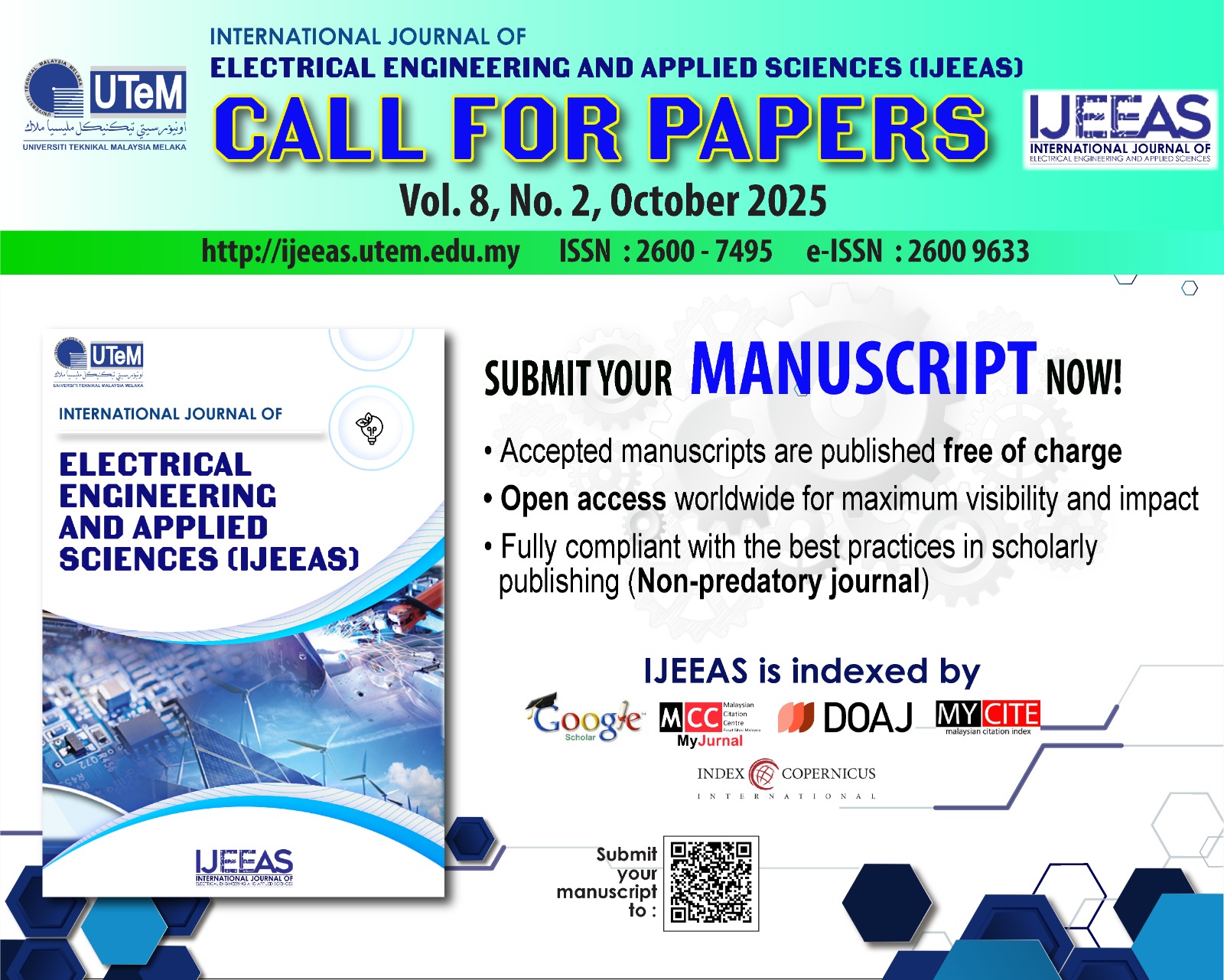Development of Smart Glove System for Blind People
Keywords:
blind, buzzer, distance, motor, ultrasonic sensorAbstract
In 2010, the Department of Welfare estimated to have about 64,000 registered blind people in Malaysia and believed that the number increased as much as two times higher by 2020. Over the years, the tools typically used by blind people are stick and guide dogs. Blind people use a stick around their feet to detect the presence of an object. However, by using this method, blind people can only detect the object that is closer to them. Some blind people use trained dogs to assist them in their movement. Again, by using this technique, their mobility is also limited since they must depend on the dog. Recently, several electronic travel aids (ETA) have been designed by using several techniques and sensors to ease this group of disabled people. ETA is the common equipment that has been used by blind people to guide their movement from one place to another. Thus, a smart glove system for blind people is proposed in this research as an additional tool to the existing ETA. This system is developed by using Arduino ATMega328, ultrasonic sensors, a vibrating motor, and a buzzer. C language is implemented in microcontroller design. The performance of the designed system is analyzed by using a ping test and mobility test based on the distance range between the wall, which functions as the obstacle to the sensor. The results show that the closer the distance range, the higher the reading of motor vibration and buzzer beeping rate.
Downloads
References
B.S.Sourab, Ranganatha Chakravarthy H.S, Sachith D’Souza. Design and Implementation of Mobility Aid for Blind People. In: International Conference on Power and Advanced Control Engineering (ICPACE), Bengaluru India, pp 290-294; 2015
S. K. Bahadir, V. Koncar, and F. Kalaouglu, 2012. Wearable Obstacle Fully Integrated to Textile Structures for Visually Impaired People. Sensors Actuators. A Phys; 179: 297-311.
Nimran Kaur, Ayush Sharma, Manisha Gururani, Atul Kumar Srivastava. Electronic Travel Aid System for Blind People. International Journal of Electrical, Electronics and Data Communication 2017; 5(6): 45-46.
Eugene F. Murphy, Earl A.Lewis, Thomas J. Radley, William M. Bernstock, Anthony Staros, Howard Freiberger, Edward Peizer. Bulletin of Prosthetics Research, Department of Medicine and Surgery Veterans Administration, Washington DC, 1976
P.L.Emiliani. Development of Electronic Aid for Visually Impaired. In: Rehabilitation of Visually Impaired, Italy, 1986
Daniel Goleman. Sonic Device for Blind May Aid Navigation. Science Time,
, p 1
Ayat Nada, Samia Mashali, Mahmoud Fakhr, Ahmed Farag Seddik. Effective Fast Response Smart Stick for Blind People. In: 2nd International Conference on Advances in Bio-Informatics and Environmental Engineering, Italy, pp. 1-7; 2015.
Nilima Sahoo, Hung-Wei Lin, and Yeong-Hwa Chang. Design and Implementation of a Walking Stick Aid for Visually Challenged People. Journal of Sensors 2019; 19(1): 1-17
Ter-Feng Wu, Pu-Sheng Tsai, Nien-Tsu Hu, Jen-Yang Chen. Intelligent Wheeled Mobile Robots for Blind Navigation Application. Engineering Computations, 2017; 34(2): 214-238
Genci Capi, Hideki Toda. A New Robotic System to Assist Visually Impaired People. In: IEEE ROMAN Conference, 2011
Downloads
Published
How to Cite
Issue
Section
License
Authors who publish with this journal agree to the following terms:
- Authors retain copyright and grant the journal right of first publication with the work simultaneously licensed under a Creative Commons Attribution License that allows others to share the work with an acknowledgement of the work's authorship and initial publication in this journal.
- Authors are able to enter into separate, additional contractual arrangements for the non-exclusive distribution of the journal's published version of the work (e.g., post it to an institutional repository or publish it in a book), with an acknowledgement of its initial publication in this journal.
- Authors are permitted and encouraged to post their work online (e.g., in institutional repositories or on their website) prior to and during the submission process, as it can lead to productive exchanges, as well as earlier and greater citation of published work (See The Effect of Open Access).







